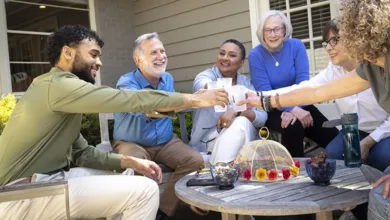Would You Wear Your Heart on Your Sleeve, Your Cap, or Your Shirt?

Wearable technology has been around for a while.
Smartwatches tell time, check texts, give weather updates, and track your steps, temps, and heartbeats. Wired earbuds are decades old, but now you can buy wireless pairs. New high-tech sunglasses let you rock to the oldies. Some running pods boast GPS trackers while others monitor the speed and impact of your foot — they are resident in shoes and socks and can ride on shoelaces.
Let’s look at other wearable technologies out there, then peek at what the future might bring.
TODAY…
Spree’s SmartCap uses a Performance Optimization Device (POD) in a silicone headband, giving you detailed information about your workouts like calorie consumption, heart rate, and body temperature. The cap costs about $30, but the POD — purchased separately — is $199. Bluetooth transmits information to your Android or Apple device.
Biometric vests and shirts connect to your smartphone and monitor body vitals such as blood pressure, pulse oximetry, respiration, skin temperature, and general activity in real-time. Companies like Hexoskin are bringing biometric garments to the market for men, women, and children, with prices ranging from $199 to $648.
Opro9 SmartDiaper is one of several wearable sensors that can be placed outside a baby’s diaper and transmit alerts when the diaper is ready to be changed. The devices and monitoring systems run from $60 to $200. Such sensors are also available for adults. Though expensive, these devices can save time for caregivers, minimize response time, avoid excess exposure to moisture, and improve an individual’s health.
Snapchat Spectacles 3.0 ($380) come with two HD cameras to capture 3D photos and videos along with four built-in microphones to record immersive, high-fidelity audio. There’s also Ray-Ban Stories Smart Glasses ($299), with photo, video, and audio capabilities. You can also use these glasses, of course, to carry on a conversation through your smartphone.
I know the warm, toasty days of late spring are upon us, but remember those frosty winter days ahead. By the end of the year, you can impress all your friends with a pair of Hotronic XLP 2P Bluetooth Surround Comfort Heat Socks you can control from your smartphone for only $379.
Smart jewelry is getting more stylish and practical. The invisaware necklace ($169, plus $24 for six months of service) will instantly send a text message with your GPS location to five people when you double press the backside of the charm, should you need help. The app also allows you to use a free 9-1-1 feature.
TOMORROW…
- Interactive strips or modules individuals can program and apply to their favorite item to track, transmit, or store information.
- Remember mood rings? Mood garments will let those around you know whether you are calm, stressed, happy, or sad. Imagine what your office, luncheon, or group function might look like if everyone wore mood shirts!
- There is already a decent selection of backpacks with solar panels and USB ports. Tommy Hilfiger even unveiled a jacket equipped with solar panels. Now, researchers at Finland’s Aalto University have developed solar panels so thin that they can be sewn right into any material. Soon the shirt you wear could power your smartphone.
- Your body temperature could be an energy source. In 2014, Sean Hodgins created the Peltier Ring, which converted enough body heat to power small LED lights on a ring.
- Makeup with microchips! Microchip manicures already implant small data storage units under/into fingernails but chips in the polish itself could support a sophisticated identification or tracking system or enable functions like those fancy virtual 3-D projections one sees on TV.
YESTERDAY…
Yesterday was my deadline for this article, and if I was wearing one of those mood shirts now, whatever colors come out for embarrassment or guilt would be glowing quite nicely!






